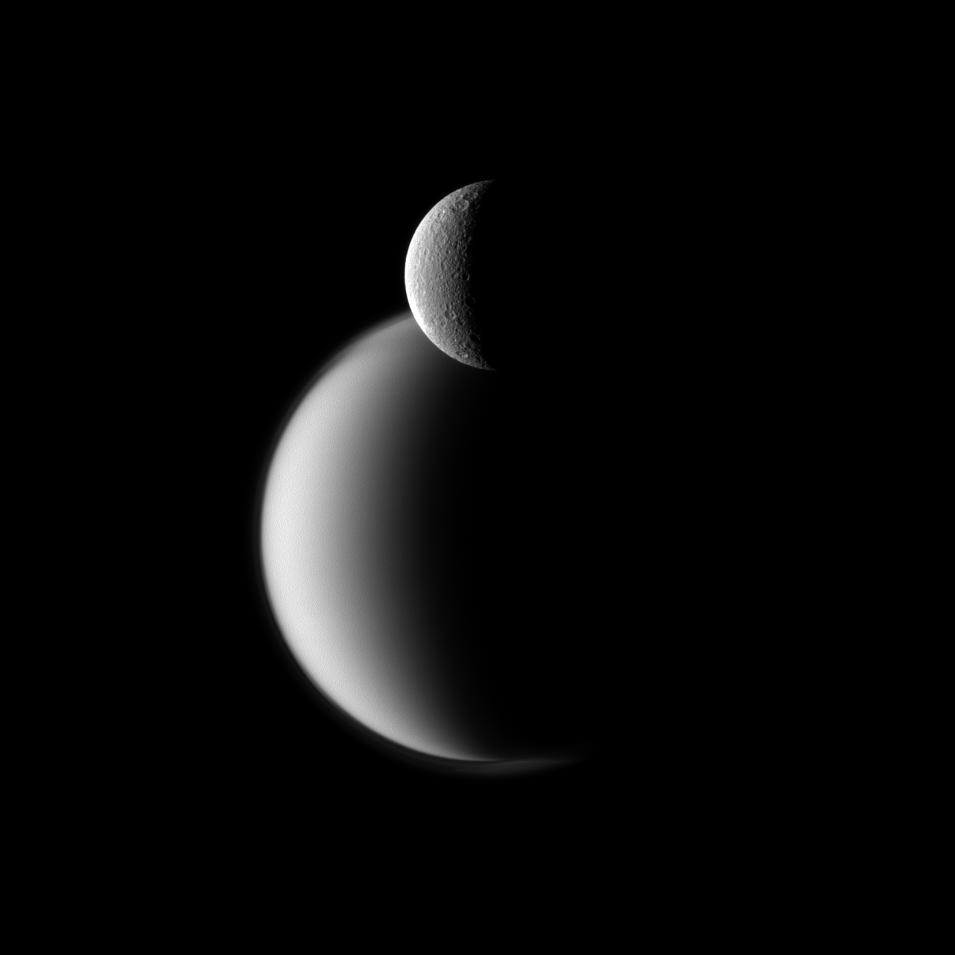Rhea Before Titan

| PIA Number | PIA14595 |
|---|---|
| Language |
|
Craters appear well defined on icy Rhea in front of the hazy orb of the much larger moon Titan in this Cassini spacecraft view of these two Saturn moons.
See Haze Layers on Titan and Orange and Blue Hazes to learn more about the hazy atmosphere on Titan (3,200 miles, or5,150 kilometers across). See Rhea: Full Moon and Rhea's Real Big Rays for closer views of craters on Rhea (949 miles, or 1,528 kilometers across).
Lit terrain seen here is on the leading hemispheres of Rhea and Titan. North on the moons is up and rotated 13 degrees to the left. The limb, or edge of the visible disk, of Rhea is slightly overexposed in this view.
The image was taken in visible green light with the Cassini spacecraft narrow-angle camera on Dec. 10, 2011. The view was acquired at a distance of approximately 1.2 million miles (2 million kilometers) from Titan and at a Sun-Titan-spacecraft, or phase, angle of 109 degrees. The view was acquired at a distance of approximately 810,000 miles (1.3 million kilometers) from Rhea and at a Sun-Rhea-spacecraft, or phase, angle of 109 degrees. Image scale is 8 miles (12 kilometers) per pixel on Titan and 5 miles (8 kilometers) per pixel on Rhea.
The Cassini-Huygens mission is a cooperative project of NASA, the European Space Agency and the Italian Space Agency. The Jet Propulsion Laboratory, a division of the California Institute of Technology in Pasadena, manages the mission for NASA's Science Mission Directorate in Washington. The Cassini orbiter and its two onboard cameras were designed, developed and assembled at JPL. The imaging team is based at the Space Science Institute, Boulder, Colo.
For more information about the Cassini-Huygens mission visit http://saturn.jpl.nasa.gov or http://www.nasa.gov/cassini . The Cassini imaging team homepage is at http://ciclops.org .
Credit: NASA/JPL-Caltech/Space Science Institute
